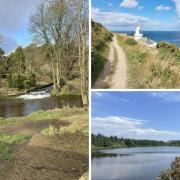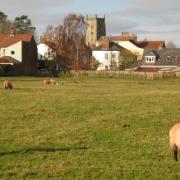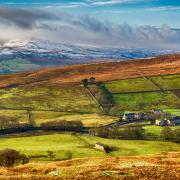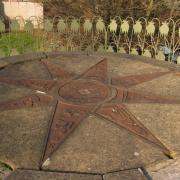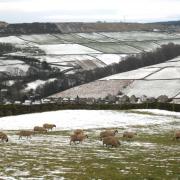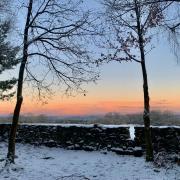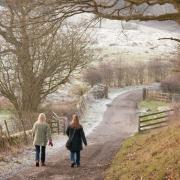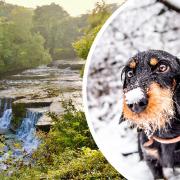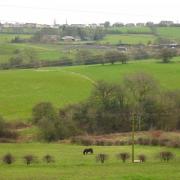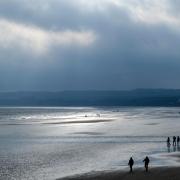Terry Fletcher enjoys a glorious walk from Reeth through Swaledale which takes in some of the area’s fascinating history.

Swaledale is widely regarded as the grandest of all the Yorkshire Dales, deep cut and occasionally austere. In places the fellsides are so steep and cluster in so closely that in the darkest days of winter the sun does not reach parts of the valley floor. It was been said the dale has no summer, just ‘nine months of winter and three months of back end’. That is a gross calumny. On a bright sunny day the Swale sparkles and the valley’s hay meadows are among the jewels of the national park.
Yet Swaledale was not always so peaceful. This walk starts from Reeth, with its fine Georgian buildings set around the vast village green, and then explores two aspects of a less tranquil past. First it visits the remains of Maiden Castle, much of whose history remains a mystery but was a huge defensive undertaking on the fellside. It then goes on to pass through old lead workings, whose own history goes back beyond Roman times and whose fumes once darkened the skies while crushing mills drowned out the skylarks which delight visitors today.
DIRECTIONS

From the village green, walk past the Black Bull and the National Park Centre into Anvil Square and take a footpath signed ‘To the river’. It soon enters a small housing estate. At a T-junction turn left and then almost immediately right on a narrow lane following signs to the swing bridge. The path initially traverses the hillside before dropping to the river bank.
The Swing Bridge proves not to be a swing bridge at all but a suspension bridge – though it can be made to swing with a little effort. It was built in 1920 to link Reeth with Grinton but the Swale, one of the liveliest spate rivers in England, washed it away in 2000. Two years later it was replaced by today’s almost identical copy.
Cross the bridge to where the onward route heads rightwards (upstream). Some follow the riverbank but the right of way first takes a short diversion, heading straight ahead across one field before joining a track heading rightwards. A bridleway soon leaves this heading diagonally rightwards across a field back to the river, which is followed until it reaches a set of large stepping stones coming across the river in a graceful arc.
A few yards further on, the path goes through a gate and then climbs diagonally up the hillside to a wall. Follow this rightwards to a small gate leading onto a narrow, enclosed way. Go up this and between the farm buildings before climbing directly up the field ahead to a gate, go through this and then follow the path diagonally rightwards to a road. Turn left along this for 100 yards or so and at the brow of the hill take a signed footpath climbing rightwards up the slope aiming for what appears to be a solitary hawthorn bush.
On reaching it the hawthorn is found to be a tree growing in the sunken ditch of Maiden Castle. Despite its name there are no battlements or turrets only massive earthworks that once protected this Iron Age fort, one of the best preserved in Yorkshire, and well worth exploring.
From the top, south west corner of the earthworks, take a path which climbs towards a cairn perched on a small mound. From here the path carries on westwards, gaining height almost imperceptibly and making for a shooting cabin further up the slope.
Various paths are used until the tracks pass below the ruddy spoilheaps of the Harker Lead Mine, one of the many old workings which once dotted the valley, making it a hive of industry rather than the green landscape we enjoy today. Before reaching the shooting hut, turn up one of the several paths which climb the slope past the old workings to eventually reach a broad Land Rover track running along the plateau.
Turn left along this track, which leads unerringly along the shelf for more than a mile. As it starts to descend, Reeth appears away to the left while ahead the tower of Grinton Lodge, a former shooting lodge, now a youth hostel, sits among the distant trees.
Stay on the broad track and at a crossroads go straight ahead on a softer track, which is much more giving underfoot. It winds down to Grinton Beck and a gate crossing the track. Go through the gate but immediately turn left to follow the beck for a few yards downstream before abandoning it for a path climbing leftwards. This weaves across the moor and through a gate before becoming a delightful grassy trod dropping into the village of Grinton. When it reaches a lane go left down this. Immediately after passing the church a footpath turns left along the side of the graveyard.
St Andrew’s dates back to mediaeval times and is called the Cathedral of the Dales because it was clearly built to serve a much bigger community than lives in the area today. It is well worth a visit with some attractive stained glass and interesting carvings.
The path runs beside the churchyard before dropping to the river for a short stretch. It then climbs to a quiet lane. Turn right along this. Where it turns left and begins to climb take a charming bridleway on the right which meanders above the river before arriving back at the Swing Bridge. Retrace your steps back to Reeth.
COMPASS POINTS
Start/finish: Reeth
Distance: 8 miles/13km
Height gain: 1100ft/355metres
Time: 4-5 hours
Terrain: Moorland tracks, steep climb from river to Maiden Castle
Map: OS OL 30 Yorkshire Dales Northern and Central
Refreshments: Pub in Grinton, cafés and pubs galore in Reeth





